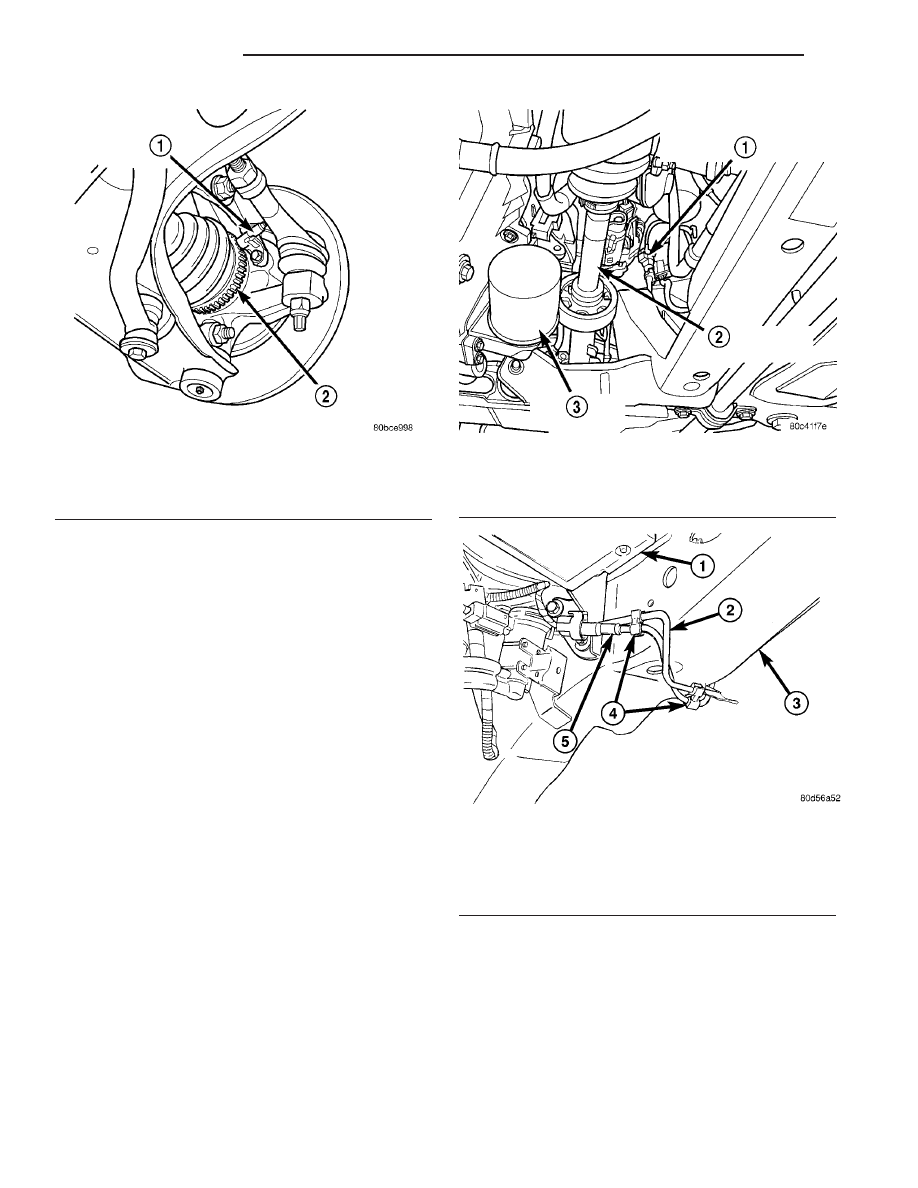Chrysler PT Cruiser. Manual - part 434

output of the sensor, sent to the CAB, is a DC volt-
age signal with changing voltage and current levels.
The ground for the IC and the current sense circuit
is provided by the CAB/ABM.
When a valley of the tone wheel is aligned with the
sensor, the voltage signal is approximately 0.8 volts
and a constant 7 mA current is sent to the CAB/
ABM. As the tone wheel rotates, the tooth shifts the
magnetic field and the IC enables a second 7 mA cur-
rent source. The CAB/ABM senses a voltage signal of
approximately 1.6 volts and 14 mA. The CAB/ABM
measures the amperage of the digital signal for each
wheel. The resulting signal is interpreted by the
CAB/ABM as the wheel speed.
REMOVAL
NOTE: Before proceeding, (Refer to 5 - BRAKES -
WARNING) (Refer to 5 - BRAKES - CAUTION).
(1) Raise the vehicle. (Refer to LUBRICATION &
MAINTENANCE/HOISTING - STANDARD PROCE-
DURE).
(2) Disconnect the wheel speed sensor cable con-
nector from the wiring harness on the inside of the
frame rail above the front suspension crossmember
(Fig. 5). The connector has a locking tab which that
must be pulled back before the connector release
tang can be depressed, releasing the connection.
(3) If the sensor being removed is a left front,
unclip the speed sensor cable from the brake tube on
the inside of and under the frame rail (Fig. 6).
(4) Remove the speed sensor cable grommet from
the retaining bracket attached to the brake hose on
the outside of the frame rail.
(5) Remove the bolt mounting the wheel speed sen-
sor head to the steering knuckle (Fig. 7).
Fig. 4 Right Front Wheel Speed Sensor (Heat Shield
Not Shown)
1 - RIGHT FRONT WHEEL SPEED SENSOR
2 - TONE WHEEL
Fig. 5 Wiring Harness Connector
1 - RIGHT FRONT WHEEL SPEED SENSOR CONNECTOR
2 - RIGHT FRONT DRIVESHAFT
3 - ENGINE OIL FILTER
Fig. 6 Left Sensor Routing Along Brake Tube
1 - ABS ICU
2 - BRAKE TUBE
3 - FRAME RAIL
4 - ROUTING CLIPS
5 - WHEEL SPEED SENSOR CABLE
5 - 88
BRAKES - ABS
PT
FRONT WHEEL SPEED SENSOR (Continued)